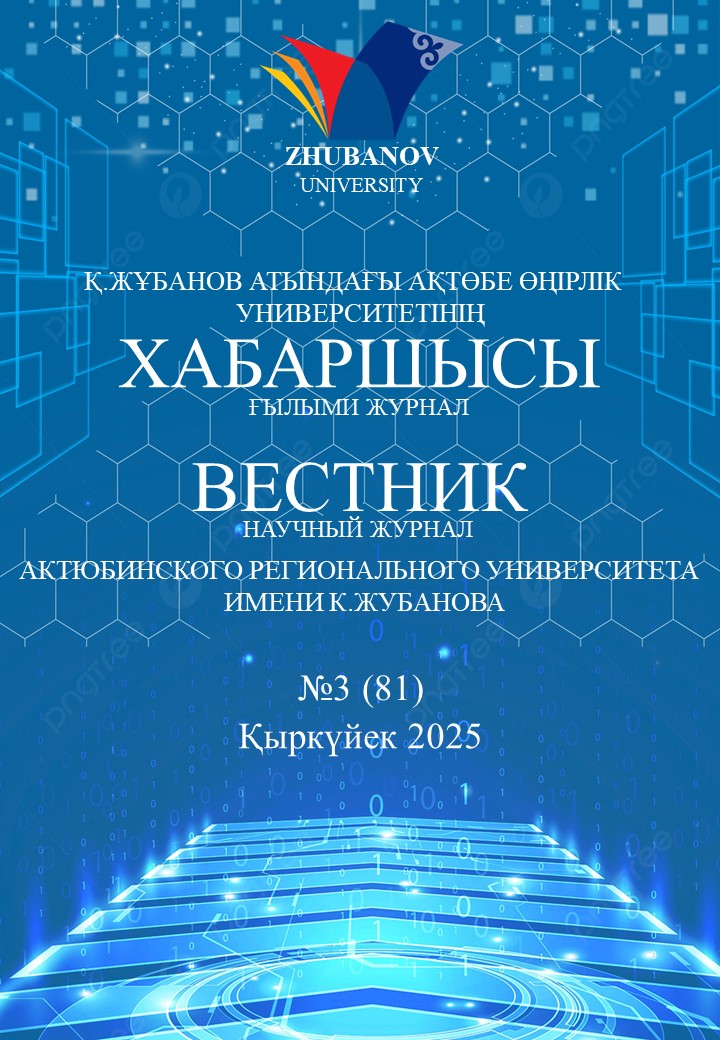The article considers carpet images and plots of animal style, which is one of the key in the culture of Central Asia and Kazakhstan, gives a semantic and artistic analysis. The sacred and symbolic meanings of individual animals and birds, depicted images and plots in the composition of carpets, are revealed, parallels are given in Central Asian mythology. To study this problem, the following research methods were used: problem-chronological, historical-comparative, semantic and semiotic analysis, as well as visual materials and a collection of carpets and carpet products of the Central State Museum of the Republic of Kazakhstan, collected from almost all regions of the republic. Based on the analysis, the author concludes that the composition of carpets in Central Asia and Kazakhstan is characterized by images of the animal style, which are the main markers of the everyday and spiritual life of peoples. The similarity of religious and philosophical worldview was revealed, in the names and form of ornaments, as well as carpets served as a sign of local and class affiliation. Thus, the author believes that the origins of many artistic motifs used in Central Asian and Kazakh carpets originate from ancient Iranian religious cults and beliefs. The researcher explains this by cultural interaction, common ethnic roots, as well as aesthetic norms and traditions that have formed over the centuries in this region.
KASENOVA K.B.
PhD, senior lecturer, Aktobe Regional University named after K. Zhubanov, Aktobe, Kazakhstan.
Е-mail: katua67@mail.ru, https://orcid.org/0000-0001-7579-4456
RUDENKO K.A.
Doctor of historical sciences, professor, Kazan State Institute of Culture, Kazan, Russian Federation.
Е-mail: murziha@mail.ru, https://orcid.org/0000-0002-4067-9287
- Руденко С. И. Древнейшие в мире художественные ковры и ткани из оледенелых курганов Горного Алтая. М.: Искусство, 1968.136 с.
- Акишев К. А., Кушаев Г. А. Древняя культура саков и усуней долины реки Или. Алма-Ата. «Академия наук Казахской ССР»,1963.320 с.
- Грязнов М. П. Булгаков А. Древнее искусство Алтая = L’art ancien de l’Altaï. Ленинград. Издательство Государственного Эрмитажа, 1958. 96 с.
- ПогосянА. О происхождении ковра «Пазырык». Ереван,2013.– С.1-21(арм.),Р.22-37 (англ.)
- Қазақстан тарихы көне заманнан бүгінге дейін: очерк / кұрас. А. К. Ақышев, М. Х. Асылбеков, К. М. Байпақов және т.б.Алматы: Дәуір, 1994.446 б.
- Артамонов М.И. Сокровища саков. Москва: Искусство,1973. 234 с.
- Ерофеева И. В. Символы казахской государственности (позднее средневековье и новое время). Алматы: ИД Аркаим, 2001. 152 с.
- Өсеров Н., Естаев Ж.Ислам және қазақтардың әдет-ғұрпы.Алматы: Қазақстан,1992.152 б.
- Полосьмак Н. В. Пазырыкская культура: автореф. …док. и. н. Новосибирск, 1997. 34 с.
- Дьяконов М. М. Образ Сиявуша в среднеазиатской мифологии. // КСИИМК, 1951. Вып. XL. С. 34 - 44.
- Потто В. Из путевых заметок по степи. // Военный сборник.1887. № 11. С. 152-153.
- Наурызбаева Р. Преемственность в развитии творческой направленности личности средствами искусства: моногр. Алматы: Білім, 2006. 118 с.
- Исабекова У. Концепт «qut» в казахской языковой картине мира. // Филология и культура. 2016. №2 (44). С.84.
- Смагулов Е. А. Палеосемантика центральной композиции казахского орнамента // Известия НАН РК. Серия общественных наук,1994. № 5.С. 82-91.
- Тохтабаева Ж. Ш.Серебрянный путь казахских мастеров. Алматы: Дайк-Пресс,2005.474 с.
- Мелларт Д. Древнейшие цивилизации Ближнего Востока.М.: Наука,1982. С. 186-189.
- Кузьмина Е. Е. В стране Кавата и Афрасиаба. М.: Наука, 1977. 143 с.
- Хакимова Н. Семантика зооморфных орнаментов на тканях абра худжанда (ХIХ‒ХХ вв.) // Номаи донишгох. Душанбе, 2012. С. 172-182.


